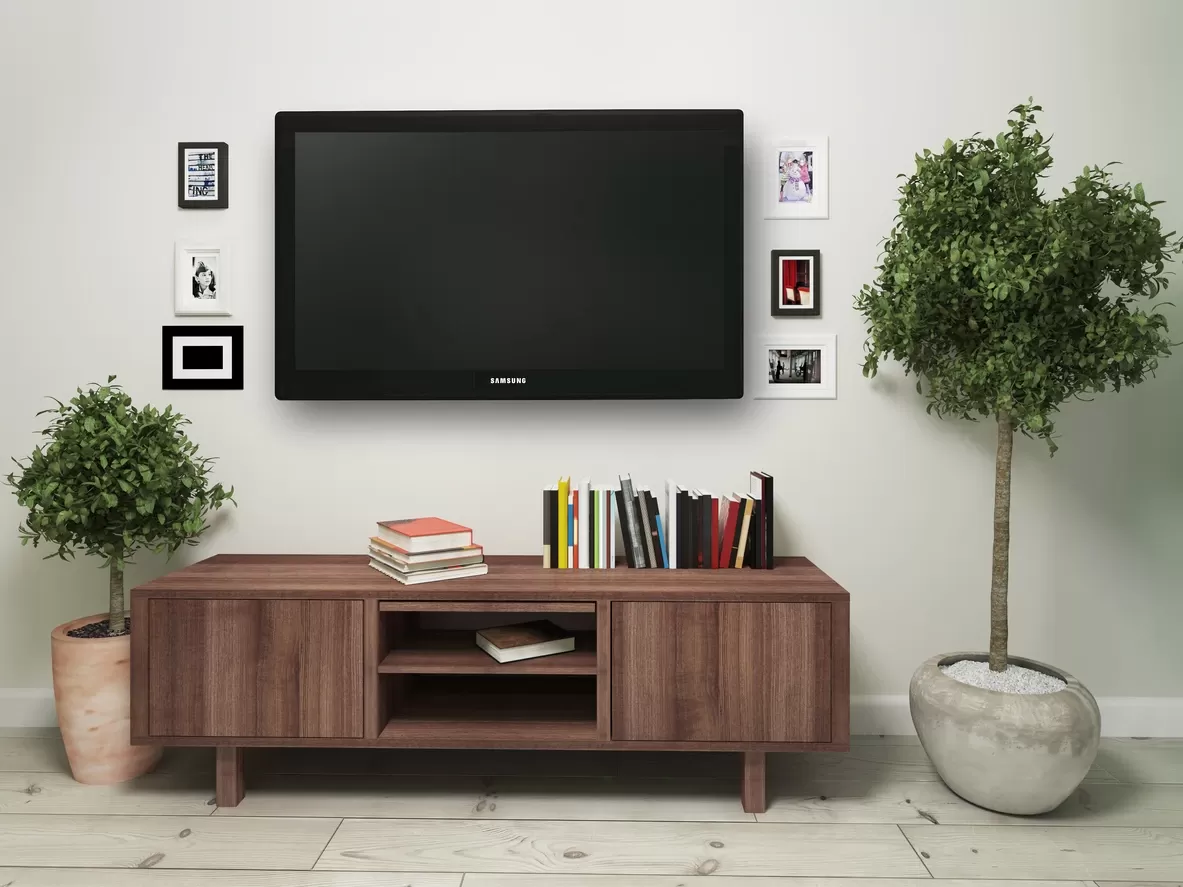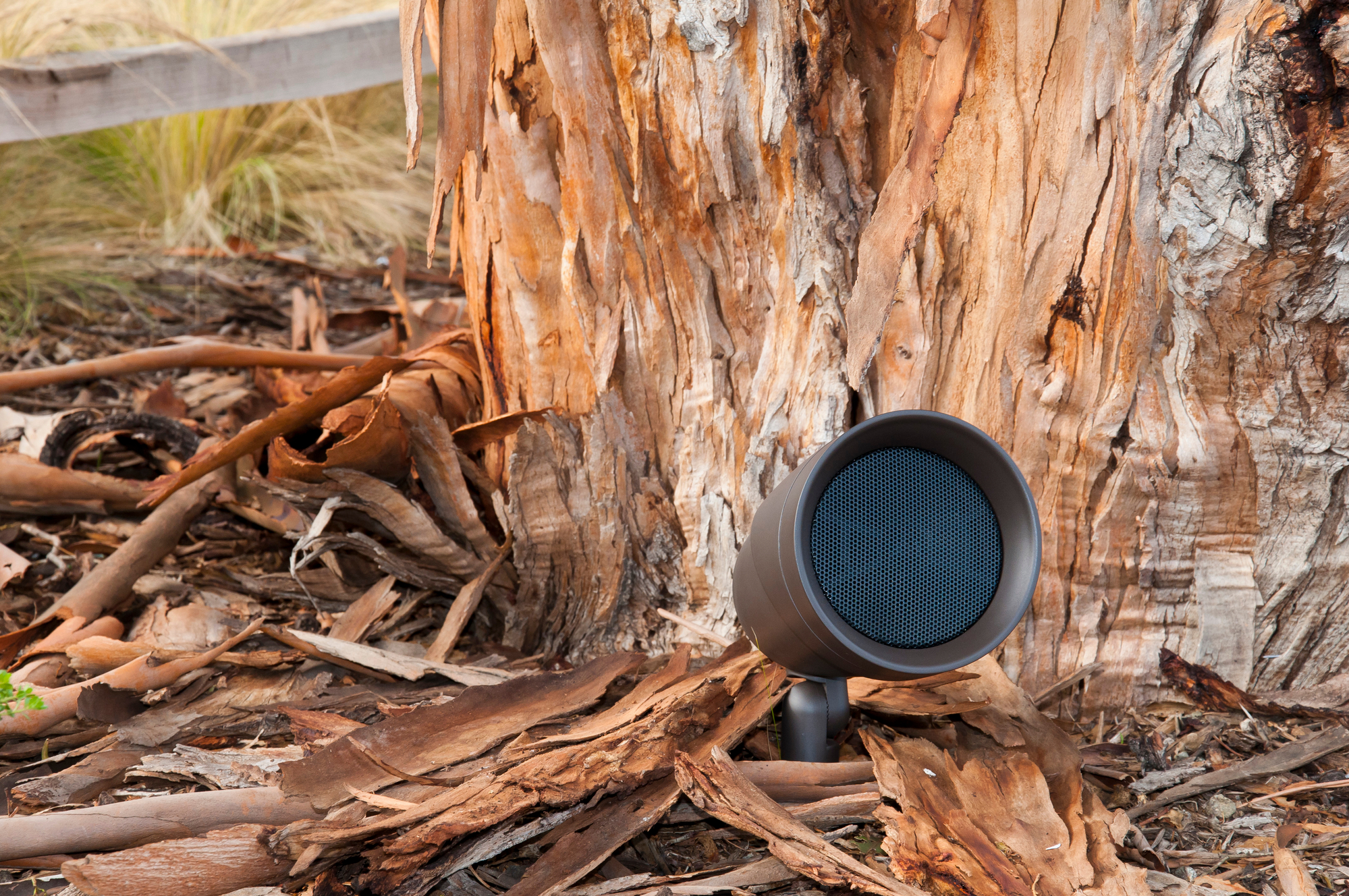3 Ways to Make Your TV's Black Boxes Disappear
Method #1: In-Wall Storage Box
Occasionally, with smaller video sources like Apple TV or Roku media players, people might choose to attach these on the back of their TV or on the wall behind the TV. While this effectively hides devices from the front, it pushes the TV off the wall by a couple of inches, ruining the look from the side. An easy solution is to simply put them inside the wall!
Today’s in-wall enclosures are designed to fit between the wall studs. These come in different sizes (14” x 14” is most common) and give you a place to install one or more small components. These enclosures can easily accommodate small network switches or surge protectors. With your sources recessed into the wall, your TV can now mount right up against your wall surface for a true low-profile installation.
Method #2: HDMI Extenders
Standard HDMI cables are not intended for, or sometimes even capable of, sending 4K video and high-resolution audio signals very far. They are usually limited to about 20 to 30 feet before things get more complicated. That makes it difficult to hide a game system or Blu-ray player inside a cabinet or a closet that isn’t close by. HDMI Extenders give you the extra distance needed to make this happen.
HDMI Extenders, sometimes called “baluns,” are actually two boxes. One is a transmitter, and the other is a receiver. They are connected by a category cable like Cat5e or Cat6. A shielded category cable works best and is preferred when possible. The video source (Xbox, PS5, cable box, Blu-ray, etc.) plugs into the transmitter and sends the HDMI signal over the cable to the receiver where your TV is located. From there, the HDMI cable connects the receiver to your TV’s HDMI input, and you’re set! This inexpensive method allows you to achieve distances as far as 330 feet!
Method #3: Video Distribution
This option not only lets you hide all your video sources, but it also allows you to share them amongst every TV in the house. It’s like Method #2 but with multiple sources in a single location distributed to every TV in your home. You gain several benefits with a video distribution system:
- Fewer Sources Required – Instead of attaching a cable box, Blu-ray player, or Apple TV to every TV in your household, you can now share these sources across any TV throughout the house. No more monthly charges for 8 cable boxes because you have 8 televisions. Just get two or three (“his,” “hers,” and “kids”) cable boxes and choose the device at whichever TV you wish to use. One media player can be available anywhere you want to watch it. With video distribution, the need for multiple media devices is a thing of the past.
- Easily Integrate with Your Audio System – When all video sources are in the same place as the amplifiers that power your whole house audio system, TV audio can be sent through any of the speakers in your home. That’s going to make everything sound much better than listening to it through the tiny speakers typically found on flat-panel TVs.
- Synchronized Video and Sound – Have you ever turned to the same channel on two TVs in nearby rooms simultaneously, but they were out of sync and resulted in that annoying echo effect? With video distribution, playing the same source on multiple TVs doesn’t do this. Audio and video are perfectly aligned, no matter how many rooms are utilizing that one source.

Call or Visit Us
You can mix and match these methods depending on your needs, budget, and preferences. Bring your plans to us and we can help guide you on what makes sense for you and your home.
When you subscribe to the blog, we will send you an e-mail when there are new updates on the site so you wouldn't miss them.





